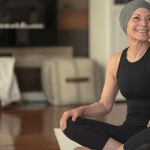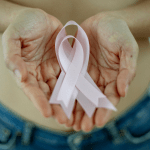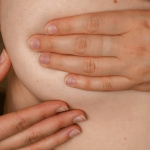Definition and Purpose of Breast Self-Exams
A breast self-exam (BSE) is a methodical, non-invasive inspection of the breasts performed by an individual on themselves. By using visual and tactile techniques, individuals can monitor their breasts for any noticeable changes in appearance or texture. The primary purpose of BSE is to enhance breast awareness, enabling individuals to identify what is normal for their breasts and to detect any new or unusual changes that may warrant further medical evaluation.
The Role of Self-Exams in Breast Health Awareness
Self-exams play a crucial role in breast health awareness. While BSEs are not a substitute for professional screenings such as mammograms, they serve as a personal line of defense in recognizing early signs of potential issues. By becoming familiar with the normal look and feel of their breasts, individuals are more likely to notice when something changes. This awareness is particularly important as some individuals may discover the first indication of breast cancer through a lump or change detected during a self-exam.
Complementing Professional Screenings with Self-Exams
Although BSEs have not been shown to reduce mortality from breast cancer or replace the need for mammography, they can be a valuable complement to professional screenings. Regular self-exams can help bridge the gap between clinical visits, allowing for ongoing monitoring of breast health. It is essential to discuss the benefits and limitations of BSEs with a healthcare provider, who can provide guidance on proper techniques and interpretation of findings. By integrating BSEs into a comprehensive breast health routine, individuals can take a proactive approach to their well-being, ensuring that any concerning changes are promptly addressed with the help of a medical professional.
The Importance of Regular Self-Exams
Detecting Changes in Breast Tissue
Regular self-exams are crucial for detecting changes in breast tissue that may indicate health issues, including breast cancer. While not all changes signify cancer, being vigilant can lead to early detection, which is key in successful treatment. Many women report that the first sign of their breast cancer was a new lump or change in their breast that they discovered on their own. By familiarizing yourself with the normal look and feel of your breasts, you can quickly identify any anomalies and seek medical advice promptly.
Understanding What’s Normal for You
Each woman’s breasts are unique, with natural variations in shape, size, and texture. Hormonal changes throughout the menstrual cycle can also affect the breasts’ appearance and how they feel. Understanding what is normal for you is a personalized baseline against which any changes can be measured. This personal awareness is a powerful tool in recognizing when something is amiss. It’s important to remember that most changes are benign, but only a healthcare provider can determine the cause of a change.
Self-Exams as a Proactive Health Measure
Conducting regular self-exams is a proactive health measure that empowers women to take charge of their breast health. While self-exams should not replace professional screenings such as mammograms, they serve as a complementary practice. Self-exams can help bridge the gap between clinical visits, allowing for ongoing monitoring of breast health. By incorporating self-exams into your routine, you are taking an active role in your health care and potentially improving your chances for early detection of abnormalities.
In conclusion, regular self-exams are a vital component of breast health awareness. They enable the early detection of changes, help women understand their normal breast tissue, and act as a proactive measure in maintaining breast health. While self-exams are not a standalone diagnostic tool, they are an important part of a comprehensive approach to breast cancer screening and overall health vigilance.
When and How Often to Conduct Self-Exams
Recommended Frequency of Self-Exams
Regular self-examinations are a key component of breast health awareness. Most healthcare professionals advocate for monthly breast self-exams. This consistent practice is not only about trying to detect breast cancer but also about becoming familiar with the normal state of your breasts so that you can identify any unusual changes. While self-exams should not replace professional screenings and mammograms, they serve as a personal line of defense, enabling you to seek medical advice promptly should you notice anything concerning.
Optimal Timing Relative to Menstrual Cycle
The timing of a self-exam is crucial for those who menstruate. Hormonal fluctuations throughout the menstrual cycle can affect breast tissue, often making breasts tender and lumpy before or during menstruation. To minimize discomfort and ensure consistency in what you’re feeling, it is best to perform a self-exam when your breasts are least likely to be tender—typically, the week after your period ends. This timing helps in distinguishing between normal, cyclical changes and potential abnormalities.
Scheduling for Post-Menopausal Individuals
For post-menopausal individuals or those with irregular periods, establishing a regular schedule is equally important. Choose a specific day that’s easy to remember, such as the first or last day of the month, or a date that holds personal significance. Consistency is key, as it allows for a reliable comparison from month to month. If you notice any changes during your self-exams, document them and discuss them with your healthcare provider, even if you believe them to be minor. It’s always better to be cautious and proactive when it comes to your health.
In conclusion, monthly self-exams are a recommended practice for breast health awareness. By conducting these exams at the optimal time—after the menstrual cycle for those who menstruate, or on a fixed date for post-menopausal individuals—you empower yourself with knowledge about your body. This knowledge can be instrumental in early detection of any changes, leading to timely medical intervention if necessary.
Step-by-Step Guide to Performing a Breast Self-Exam
Visual Inspection Techniques
Begin your breast self-exam by finding a comfortable and well-lit room with a mirror. Stand shirtless and braless with your arms at your sides. Look for any changes in the size, shape, or symmetry of your breasts. Take note of any puckering, dimpling, or changes in skin texture. Raise your arms overhead and look for the same changes. Also, press your hands firmly on your hips and bend slightly toward the mirror to flex your chest muscles; asymmetries or changes may be more visible in this position. Lastly, lift your breasts to examine the undersides for any abnormalities.
Manual Palpation Methods
After the visual inspection, it’s time to feel your breasts for any lumps or changes. You can do this while lying down, as this position spreads the breast tissue and makes it easier to examine. Use the pads of your three middle fingers to palpate your breast tissue. Apply light pressure to feel the tissue closest to the skin, medium pressure for tissue in the middle of your breasts, and firm pressure to feel the tissue near your chest and ribs. Move your fingers in a circular motion or imagine your breast as a series of wedges and sweep your fingers along each piece, moving toward the nipple.
Areas to Cover During the Exam
- Start from the outermost part of your breasts near the armpit and move inward.
- Ensure you cover the entire breast area, including above and below your collarbone and all the way to your armpit.
- Examine both breasts thoroughly, including the nipple area, pressing gently to check for any discharge.
Common Pitfalls and How to Avoid Them
One common pitfall is not using the correct pressure or missing parts of the breast. To avoid this, be methodical in your approach, and consider using a pattern like the face of a clock or the slices of a pie to ensure full coverage. Another pitfall is rushing through the exam. Take your time, and don’t hesitate to repeat any area if you’re unsure about what you’ve felt. Lastly, remember that finding a lump does not automatically mean cancer, but it does warrant a conversation with your healthcare provider.
Remember: Breast self-exams are a proactive way to be familiar with your breast health and should be done in conjunction with regular clinical exams and mammograms as recommended by your healthcare provider.

From unhappy, dry, and sandpaper to silky, smooth and feeling good. That’s Cleo. Cleo is a 100% natural labial balm to moisture and soothe “your other lips”. Cleo is chemical-free, water-free, pH optimized and helps maintain and restore your delicate labial skin’s natural flora. Ideal for daily use or as needed. Get the most silky, lovable lips ever.
Interpreting Your Findings
Identifying Normal Variations vs. Concerning Changes
After conducting a breast self-exam, it’s crucial to distinguish between what may be a normal variation in your breast tissue and what could be a concerning change. Normal variations can include monthly changes due to your menstrual cycle, differences in breast size, or benign lumps that are soft, movable, and may vary with your cycle. Concerning changes to look out for include a new lump or thickening in your breast or underarm, continuous pain in a specific area, dimpling or puckering of the skin, a nipple that has changed position or an inverted nipple, redness or a rash on the skin or around the nipple, or any discharge that occurs without squeezing.
Documenting Observations and Patterns
Keeping a detailed record of your self-exams can help you track any changes over time. Use a journal or digital app to note the date of the exam, descriptions of your breasts’ appearance, any variations in texture or lumps, and their location. Include any changes in your breasts’ usual patterns, such as pain or discharge. This documentation can be invaluable during consultations with your healthcare provider, providing a history that can help differentiate between typical fluctuations and potential red flags.
When to Seek Medical Advice
If you encounter any of the concerning changes mentioned above, it’s important to seek medical advice promptly. While many breast changes are benign, it’s better to err on the side of caution. Contact your healthcare provider if you discover a persistent lump, changes in the skin of your breasts, nipple discharge, especially if it’s bloody or occurs without squeezing, or any other unusual signs. Remember, early detection is key in the successful treatment of breast cancer and other conditions. Your healthcare provider may recommend further tests, such as a mammogram, ultrasound, or biopsy, to determine the cause of the changes you’ve observed.
Remember: Breast self-exams are not a substitute for professional screenings but are a complementary approach to understanding and monitoring your breast health. Always discuss the findings of your self-exams with your healthcare provider to ensure appropriate follow-up and care.
Do you know the three main ways that your body gets in touch with harmful chemicals with everyday products? Knowledge is Power!
The Ultimate Detox Guide will tell you how to lower your exposure to harmful chemicals!

Consulting with Healthcare Providers
Discussing Self-Exams with Your Provider
When it comes to breast health, open communication with your healthcare provider is essential. Discussing self-exams with your provider can offer clarity on their benefits and limitations. It’s important to share any changes you’ve noticed during your self-exams, as this information can be crucial for your provider to assess your overall breast health. Your provider can also offer guidance on proper techniques and what to look for, ensuring that you are conducting self-exams effectively.
Integrating Self-Exams into Your Health Routine
Integrating self-exams into your regular health routine can serve as a proactive approach to monitoring your breast health. Your healthcare provider can help you understand how self-exams can complement other screening methods such as mammograms. They can also assist in determining the most appropriate frequency for self-exams based on your individual risk factors and health history. Remember, self-exams should not replace professional screenings but rather act as an additional layer of vigilance.
Understanding the Limits of Self-Exams
While self-exams are a valuable tool for early detection, it’s crucial to understand their limits. Healthcare providers can explain that self-exams are not a diagnostic tool but a method of becoming familiar with the normal state of your breasts. Providers can also inform you about the potential for false positives and negatives, emphasizing the importance of professional evaluations for any concerns that arise from self-exams. By understanding these limits, you can maintain realistic expectations and a balanced perspective on the role of self-exams in breast health.
In conclusion, consulting with healthcare providers about self-exams is a step towards empowered and informed self-care. It allows for personalized advice, reinforces the importance of professional screenings, and provides a clear understanding of the role self-exams play in maintaining breast health.

THEN IT CONTAINS TOXIC CHEMICALS. WHY RISK IT GETTING SICK? GO CHEMICAL FREE.
Conclusion: Empowering Yourself Through Self-Exams
The Empowerment of Knowing Your Body
Performing regular self-breast exams (SBEs) is more than a routine check-up; it’s an act of empowerment. By becoming familiar with the normal appearance and feel of your breasts, you gain a critical edge in detecting any unusual changes. This knowledge can lead to early detection of potential issues, which is often associated with better outcomes. Understanding the nuances of your own body is a powerful step towards taking control of your health and well-being.
Encouraging Others to Perform Self-Exams
As you integrate SBEs into your life, you become a beacon of awareness in your community. Sharing your experience and knowledge with friends, family, and peers can inspire them to also take proactive steps in breast health. Encouragement can be contagious, and by fostering an environment where self-exams are discussed openly, you contribute to a culture of health consciousness and support.
- Teach others the correct technique for SBEs.
- Share personal stories to illustrate the importance of regular checks.
- Remind loved ones about the best times to perform SBEs.
Continued Education and Awareness
While SBEs are a valuable tool, they are not infallible. It’s essential to stay informed about the latest research and recommendations from healthcare professionals. Continued education on breast health, including understanding the limitations of SBEs, is crucial. Awareness campaigns and educational resources play a significant role in keeping the public informed about the best practices for breast health monitoring.
Remember, SBEs are a complement to, not a replacement for, professional screenings like mammograms. Regular consultations with healthcare providers ensure that any findings from self-exams are appropriately evaluated. By staying educated and maintaining open communication with your healthcare team, you ensure that you are doing all you can to take care of your breast health.
In conclusion, self-breast exams are a key component of a comprehensive approach to breast health. They offer the chance to detect changes early, encourage a community of support and awareness, and empower individuals with knowledge and control over their own bodies. By committing to regular self-exams, educating yourself, and consulting with healthcare professionals, you are taking important steps towards maintaining your health and potentially saving your life.








